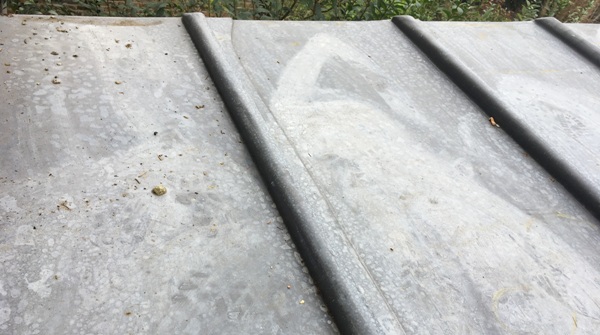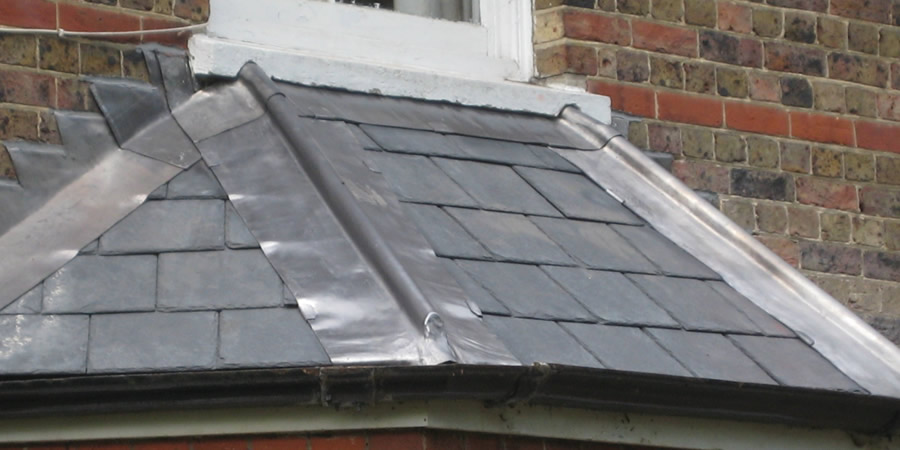Lead

|
Contents |
[edit] Introduction
Lead is a chemical element that occurs in relatively small quantities in the earth’s crust. It has been mined since ancient times. The Latin name for lead was ‘plumbum’ (hence the chemical symbol Pb) and its ore was given the name ‘galena’ by the Roman naturalist Pliny.
Lead is a heavy metal which takes on a dull grey appearance when exposed to air. Although relatively expensive, it is both durable and malleable. It also has a low melting point. These qualities have enabled its use in building applications such as roofing, damp proofing and plumbing. Other uses have included paints, petrol, radiation shielding, batteries, bullets and shot, weights, solders, pewter and decorative work on buildings, windows, flashing, pipework and so on. Today, leaded petrol is only used for special vehicles; for general use, unleaded petrol is available and went on sale in the UK in June 1986.
[edit] Toxicity
Lead is a toxic element which, after prolonged exposure, can cause damage to the central nervous system and kidneys. It is particularly hazardous for young children as it can affect their development and its sweet flavour may prompt them to try and eat it. It may also be a carcinogen. It also causes animal poisoning and can interfere with numerous human enzymes, and cause brain damage. Although a naturally occurring toxic metal and highly dangerous pollutant it is used in alloys, ceramic components, and solders, but has the benefit of being easily recycled, in the UK, 95% of lead is recycled.
Lead use is covered by the EU and UK Restriction of Hazardous Substances in Electrical and Electronic Equipment (RoHS) directive and regulations, meaning its use is restricted to 0.01% in products through application and monitored, along with other substances that include cadmium, mercury, hexavalent chromium, polybrominated biphenyls (PBB) and polybrominated diphenyl ethers (PBDE), bis(2-ethylhexyl) phthalate (DEHP), butyl benzyl phthalate (BBP), dibutyl phthalate (DBP) and diisobutyl phthalate (DIBP).
[edit] Historical usage
In Roman times, lead was used as a pigment: ‘lead white’ was a powder produced by the ‘stack’ process. The powder was separated from the lead and added to paints to give a white colour. Despite its poisonous nature, lead was used in paints and artists colours up to the 19th century. When added to oil paints, it imparts resilience and ease of handling; white lead oil-paint was marketed to artists as ‘flake white’ or ‘Cremnitz white’.
While the EU has not banned lead paint, it has issued directives that control its use. Most commercially-available decorative and art paints are now ‘lead free’.
During the medieval period, lead was used for plumbing, as a roof covering and for gutters and downpipes, primarily for churches, cathedrals and other important buildings. Its relative inertness to oxidation meant it was a stable element that could last for many decades. Its use rose sharply during the industrial revolution when it was used not just for roof sheeting, but also as a flashing (strips of lead tucked into brickwork or stone to make junctions watertight) and as a damp-proofing course to resist rising damp in masonry. Other uses included decorative work, such as finials and weather vanes, and for the lead frames (lead cames) used in stained glass.

|
[edit] Building construction
In the UK, the use of lead in building construction has declined, primarily due to its toxicity as even water run-off from a lead roof can be a source of pollution. It can also be relatively expensive, while its easy recyclability has led to many thefts from church roofs. In place of lead sheet, other metals such as zinc, copper and steel can be used although none have the softness and malleability that made lead such a favourite with roofers.
Lead is still used for traditional buildings and conservation purposes. It is available in rolls in standard 3m and 6m lengths with a maximum width of 1370mm and in thicknesses from 1.32mm (code 3) to 3.55mm (code 8), although thicknesses up to 9mm are available.
When molten lead is poured against a sand mould (sandcast) it produces a prized, fine, mottled surface that is often used for church roofs and heritage projects. It is supplied typically in 2.65mm (code 6) – 3.55mm (code 8) thicknesses and in usable widths of 1200mm.
For most domestic applications, lead can be used to create abutment flashings, chimney flashings, internal and external corners, damp proof courses (DPCs – both flat and stepped), welted hips, valley gutters, as well as cheek- and top-coverings for dormer windows and so on.

|
NB The term 'lead' may also refer to the amount of time required between the start or finish of a successor task and the start or finish of a predecessor task. For example, see: Lead time. Ref The Society of Construction Law Delay and Disruption Protocol, 2nd edition.
[edit] Related articles on Designing Buildings
- Aluminium.
- Cladding.
- Copper.
- Domestic roofs.
- Failure of metals.
- Flashing.
- Galvanised steel.
- Lead in construction.
- Leading.
- Lead came.
- Lead-light cement.
- Lead time.
- Long span roof.
- Major cast metal components.
- Metal.
- Metal roofing.
- Pitched roof.
- Roof coverings.
- Roof tiles.
- Shingle roofing.
- Spangle.
- Types of metal.
- Types of roof.
- Zinc
Featured articles and news
Building Safety Regulator reforms
New roles, new staff and a new fast track service pave the way for a single construction regulator.
Cooling centres and cool spaces
Managing extreme heat in cities by directing the public to places for heat stress relief and water sources.
Winter gardens: A brief history and warm variations
Extending the season with glass in different forms and terms.
Restoring Great Yarmouth's Winter Gardens
Transforming one of the least sustainable constructions imaginable.
Construction Skills Mission Board launch sector drive
Newly formed government and industry collaboration set strategy for recruiting an additional 100,000 construction workers a year.
New Architects Code comes into effect in September 2025
ARB Architects Code of Conduct and Practice available with ongoing consultation regarding guidance.
Welsh Skills Body (Medr) launches ambitious plan
The new skills body brings together funding and regulation of tertiary education and research for the devolved nation.
Paul Gandy FCIOB announced as next CIOB President
Former Tilbury Douglas CEO takes helm.
UK Infrastructure: A 10 Year Strategy. In brief with reactions
With the National Infrastructure and Service Transformation Authority (NISTA).
Ebenezer Howard: inventor of the garden city. Book review.
The Grenfell Tower fire, eight years on
A time to pause and reflect as Dubai tower block fire reported just before anniversary.
Airtightness Topic Guide BSRIA TG 27/2025
Explaining the basics of airtightness, what it is, why it's important, when it's required and how it's carried out.
Construction contract awards hit lowest point of 2025
Plummeting for second consecutive month, intensifying concerns for housing and infrastructure goals.
Understanding Mental Health in the Built Environment 2025
Examining the state of mental health in construction, shedding light on levels of stress, anxiety and depression.
The benefits of engaging with insulation manufacturers
When considering ground floor constructions.
Lighting Industry endorses Blueprint for Electrification
The Lighting Industry Association fully supports the ECA Blueprint as a timely, urgent call to action.





















